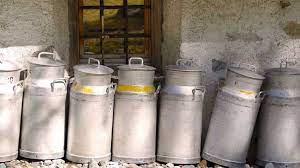NEW DELHI, Apr 16: India has already emerged as the largest milk-producing nation in the world, and if it has to capture overseas markets for its surplus milk, then the country must be export competitive, Niti Aayog member Ramesh Chand has said.
Chand in a working paper further said India’s dairy industry has been opposing any free trade agreement that involves liberalisation of trade (import) in dairy products.
“However, if we have to capture overseas markets for disposal of the future surplus of milk in the country then we must be export competitive.
“Being export competitive requires higher competitiveness than competing with imports,” he said. According to Chand, a country cannot be export competitive if it is unable to compete with imports and this issue is crucial for the future growth of the dairy industry in India.
While noting that the dairy industry must prepare for channelising some domestic production to overseas markets, he suggested that it is better if it is done after processing various products rather than liquid milk alone.
“This will require some change in investment in the dairy industry, including the value chain. India can also tap some high-end markets if it can address milk quality and livestock health,” he said.
The goal and vision of the dairy industry for the next 25 years should be to make India the largest exporter of dairy products, Chand suggested.
“This is a tall order but, looking at the past achievements of the dairy sector, it looks attainable though challenging,” he opined.
Exports are less than 0.5 per cent of the total domestic milk production. World dairy export in 2021 was valued at USD 63 billion, whereas India’s export was only USD 392 million (0.62 per cent).
Chand pointed out that the recent data on milk output shows an annual growth rate of 5.3 per cent. It is important to mention that the growth rate in milk production accelerated after 2005, when the emphasis shifted from exotic breeds to indigenous breeds.
Per capita milk production in India has now exceeded the recommended dietary level, as suggested by NIN-ICMR, which is 377 grams per person per day.
According to Chand, the dairy sector faces three major challenges — low productivity of milch animals, increased emission of greenhouse gases by the ruminants, having a detrimental effect on climate change and very low share of export.
The dairy sector in India has shown very impressive growth since the beginning of Operation Flood launched in 1970. Before this, milk production was not even keeping pace with the growth in population in the country.
Because of this, per capita milk output declined from 132 grams in 1955-56 to 110 grams in 1973-74. This led to a serious shortage of milk and milk products in the country, like a shortage of staple food during the mid-1960s, which led the country to go for adoption of green revolution technology. (PTI)
Trending Now
E-Paper


